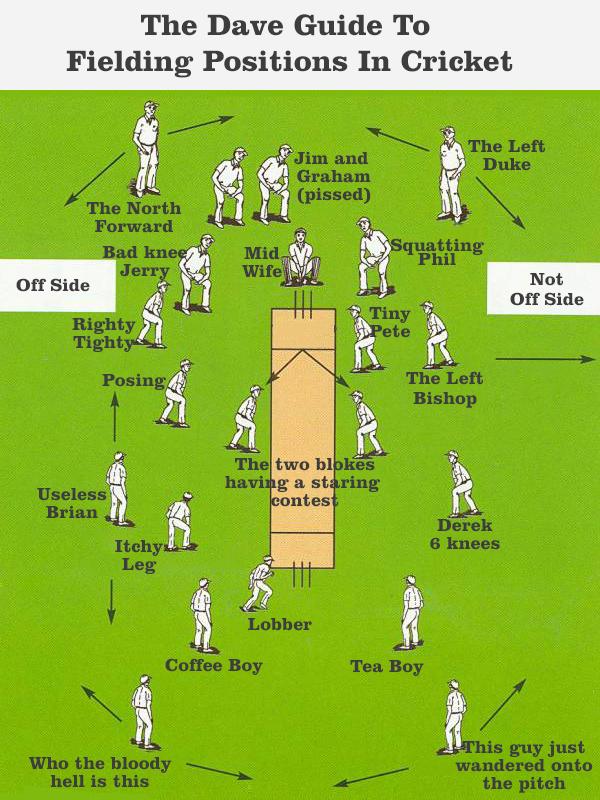
How to learn cricket fielding positions
Sumanto (LegSpn) CricketFielding.com offers an intuitive, interactive tool for cricket coaches and enthusiasts to create and visualize custom fielding positions. Improve your game strategy, study the dynamics of field placements, and become a master of the cricket field.

Cricket Fielding Positions AKBS Computers
Cricket fielding positions can be bucketed into three main categories: catching positions, saving one position, and boundary fielders. Let's break them down: Catching Positions: These are the close-in positions where fielders are primarily poised to take catches. They are in the batter's line of sight and can often be the difference between.
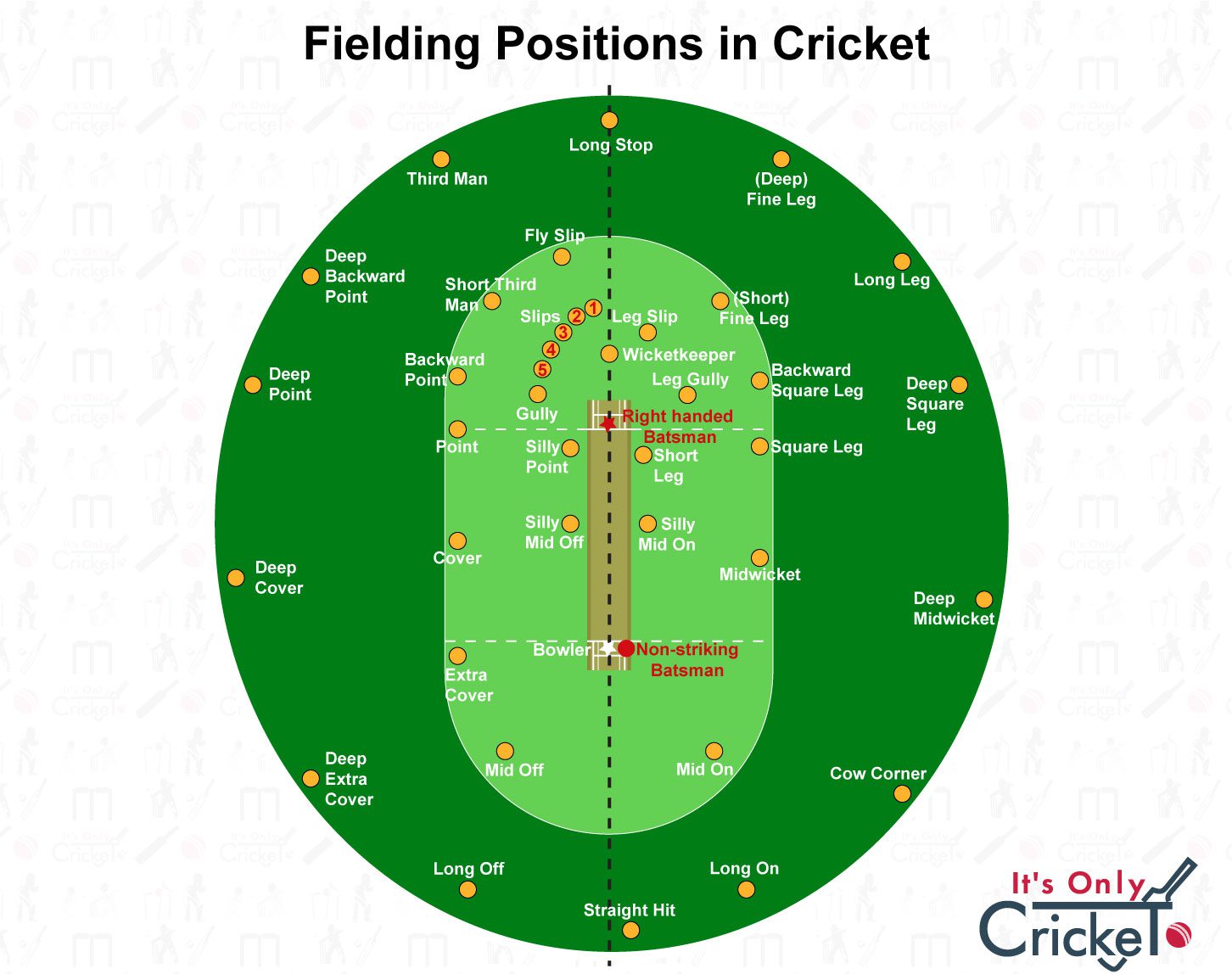
Cricket Fielding Positions Explained A Simple Guide Its Only Cricket
Although there are no fixed dimensions for the pitch, it is widely acknowledged that the diameter usually varies between 137 m (450 ft) and 150 m (500 ft). Unlike most sports, cricket does not.
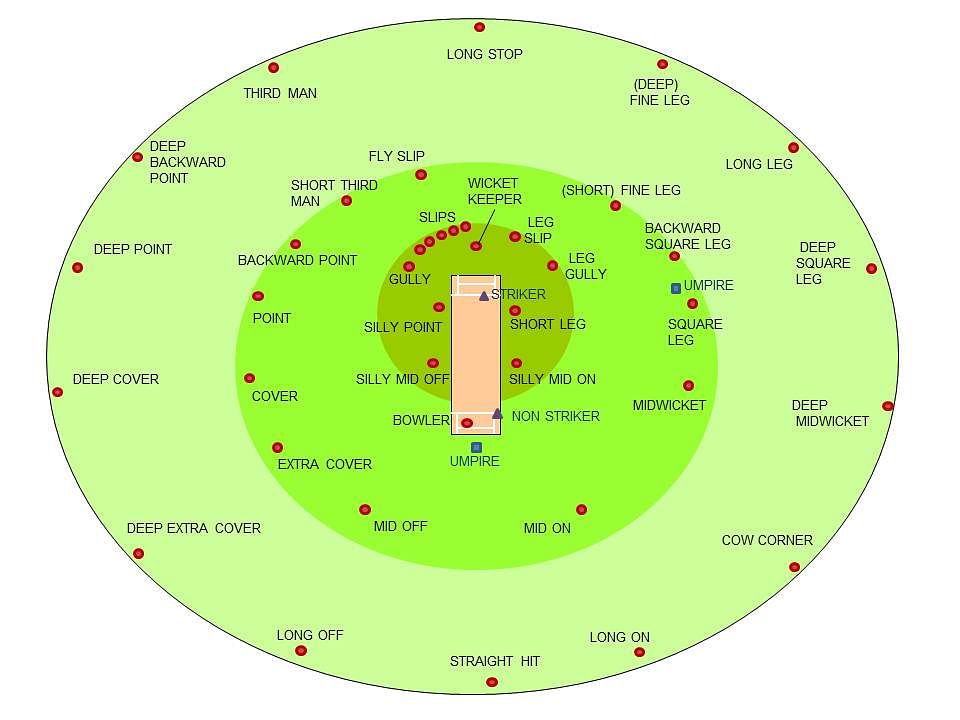
Cricket Fielding PositionsThe origins of field placement names in cricket
As mentioned in earlier articles, the members of the bowling team field to stop the batsmen from scoring runs. With 11 players in a team, one being the bowler and the other the wicket-keeper, nine other players are left to occupy the cricket fielding positions. Their positions are decided through a tactical decision made by the captain of the team in consultation with other players.

Cricket 360 Cricket Ground and Fielding Positions
Wicket keeper First slip Second slip Fine leg Deep backward square leg Deep square leg Deep mid-wicket Long off Long on Deep extra cover Deep cover Sweeper

Cricket Fielding Positions and Field Placements
[1] Fielding position names and locations Fielding positions for a right-handed batter Some historic fielding position names, from the 1893 publication The reliable book of outdoor games There are 11 players in a team: one is the bowler and another is the wicket-keeper, so only nine other fielding positions can be occupied at any time.
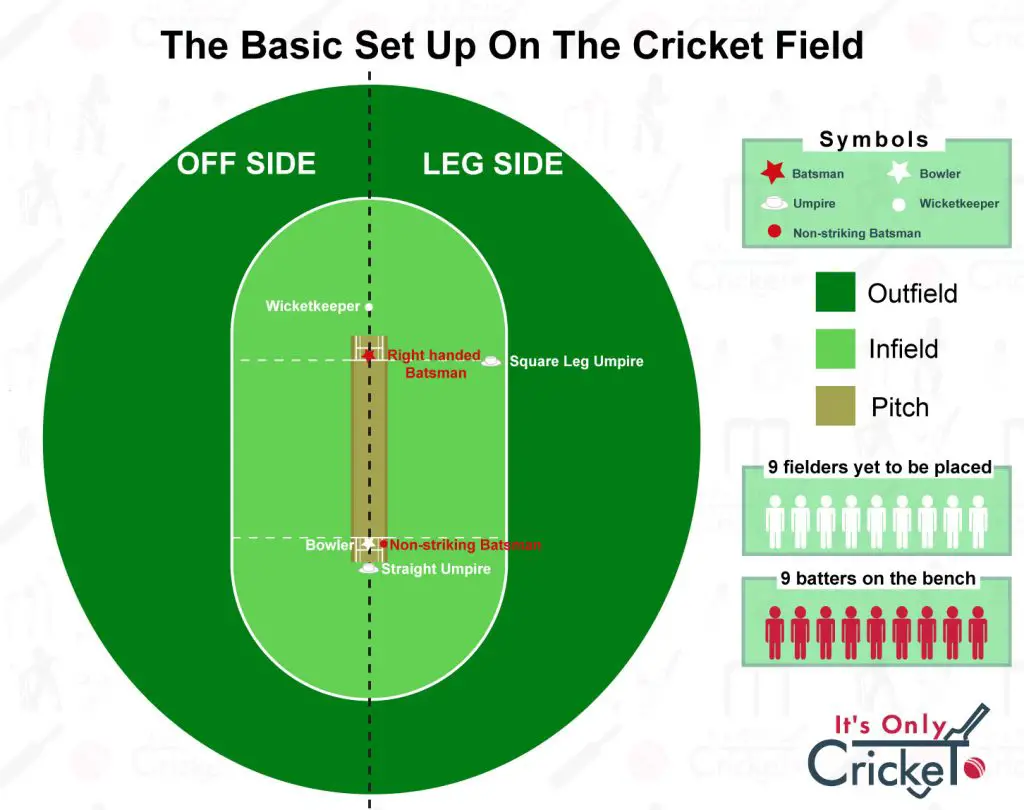
Cricket Fielding Positions Explained A Simple Guide Its Only Cricket
Table of Contents Fielding positions are an essential part of any cricket match and, if the captain places his or her players in the correct places, it can be key to the final outcome. Cricket is a sport with unique terminology and many of the fielding positions come with their own idiosyncratic language.

Cricket Fielding Positions Every Position Explained Village Cricket Co
Cricket Pitch Layout. The off side and leg side are the two parts of the cricket field, which is normally oval in shape. Eleven fielders, two batsmen, and two umpires are all in place at any given time during play. The two on-field umpires and the four fixed player positions (bowler, wicket-keeper and two batsmen) make up the basic.
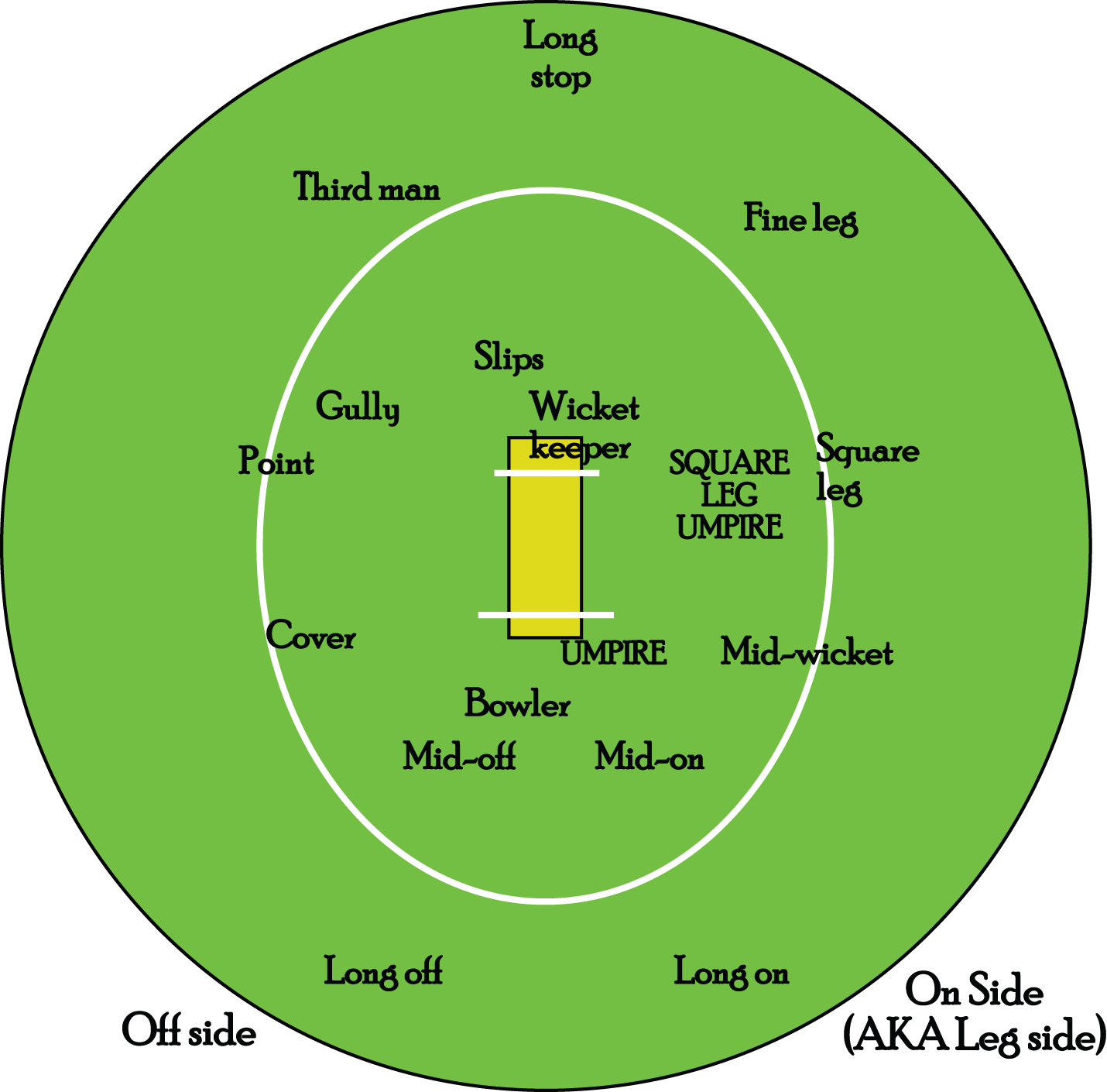
American Armchair Cricketer Outstanding in a Field, or Cricket Fielding Positions
There are no fixed dimensions for the field but its diameter usually varies between 450 and 500 feet (140 and 150 m) for men's cricket, and between 360 feet (110 m) and 420 feet (130 m) for women's cricket.
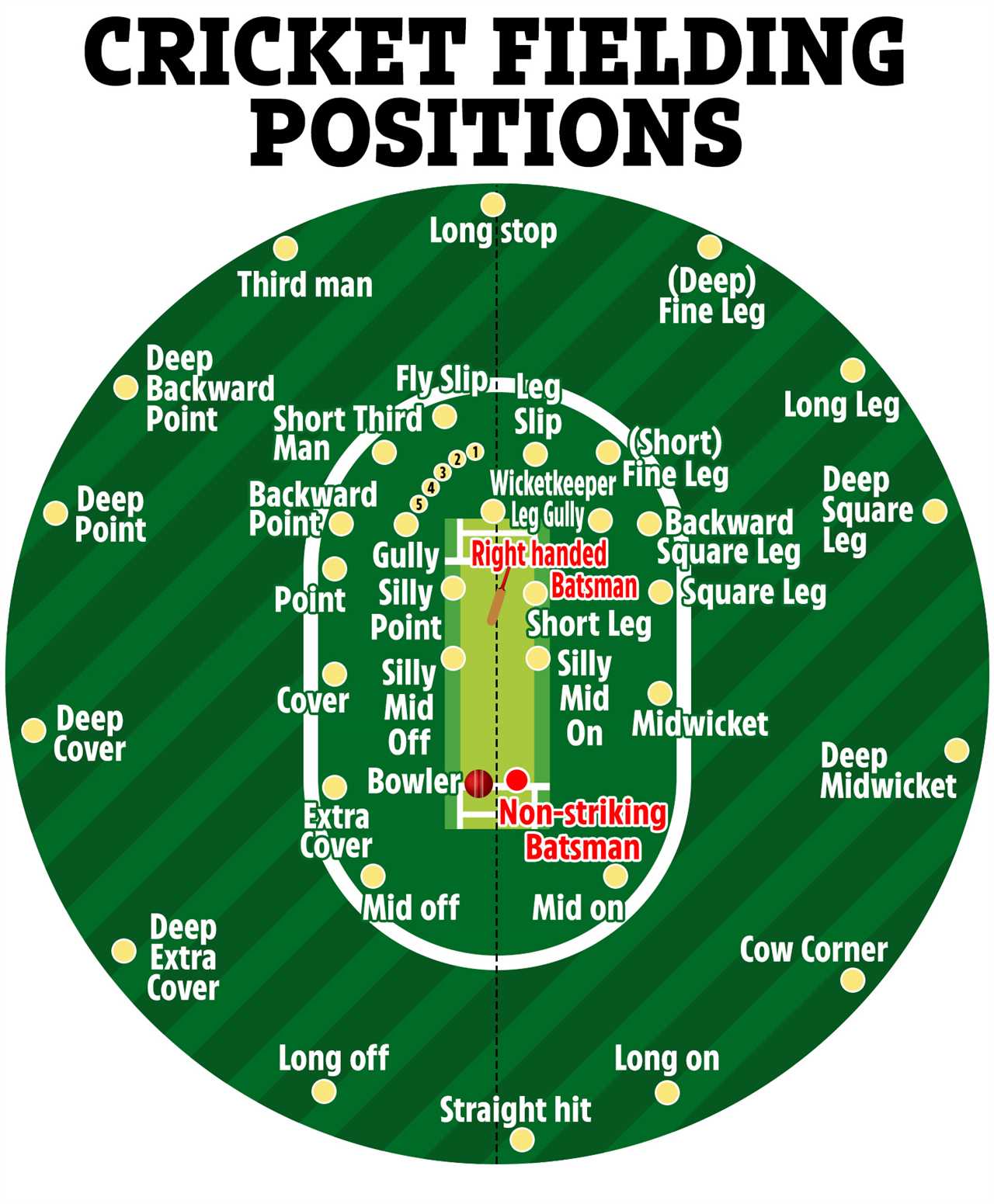
The most popular and leastknown positions in cricket fielding.
This diagram shows you all the commonly used fielding positions in cricket. The figure assumes that a right-handed batsman is standing at the opposite end of the pitch from the bowler. About This Article This article can be found in the category: Cricket Don't know your deep fine leg from your silly mid off? Never fear.
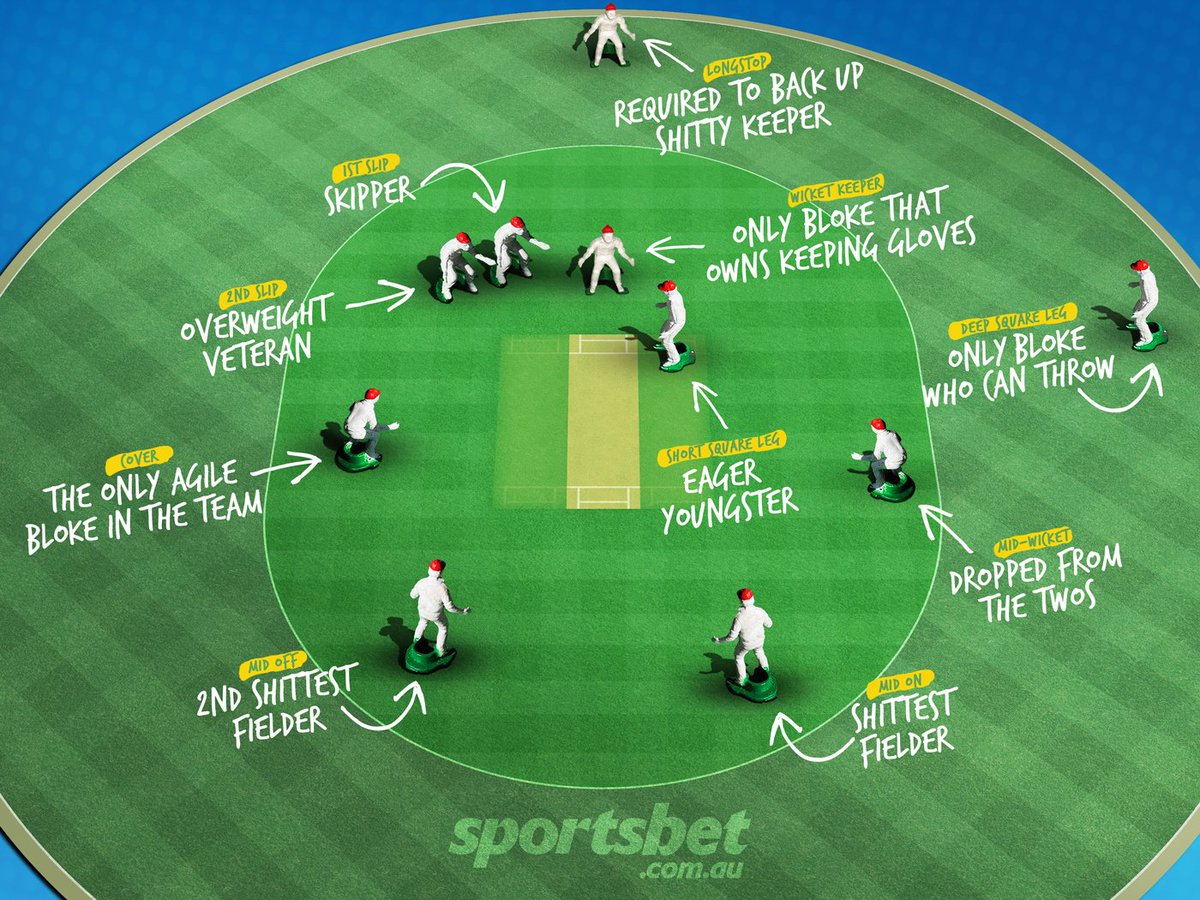
Cricket Fielding Positions 11 Players In T20, Field Settings for LegSpinners BigCricket The
This Diagram Of The Cricket Field Shows You Where Each Fielding Position Is Before we get into the details of each position specifically, let's run over the basic facts about the cricket field! Basics Of The Cricket Field In terms of fielding positions, I like to divide the cricket field into 3 parts:
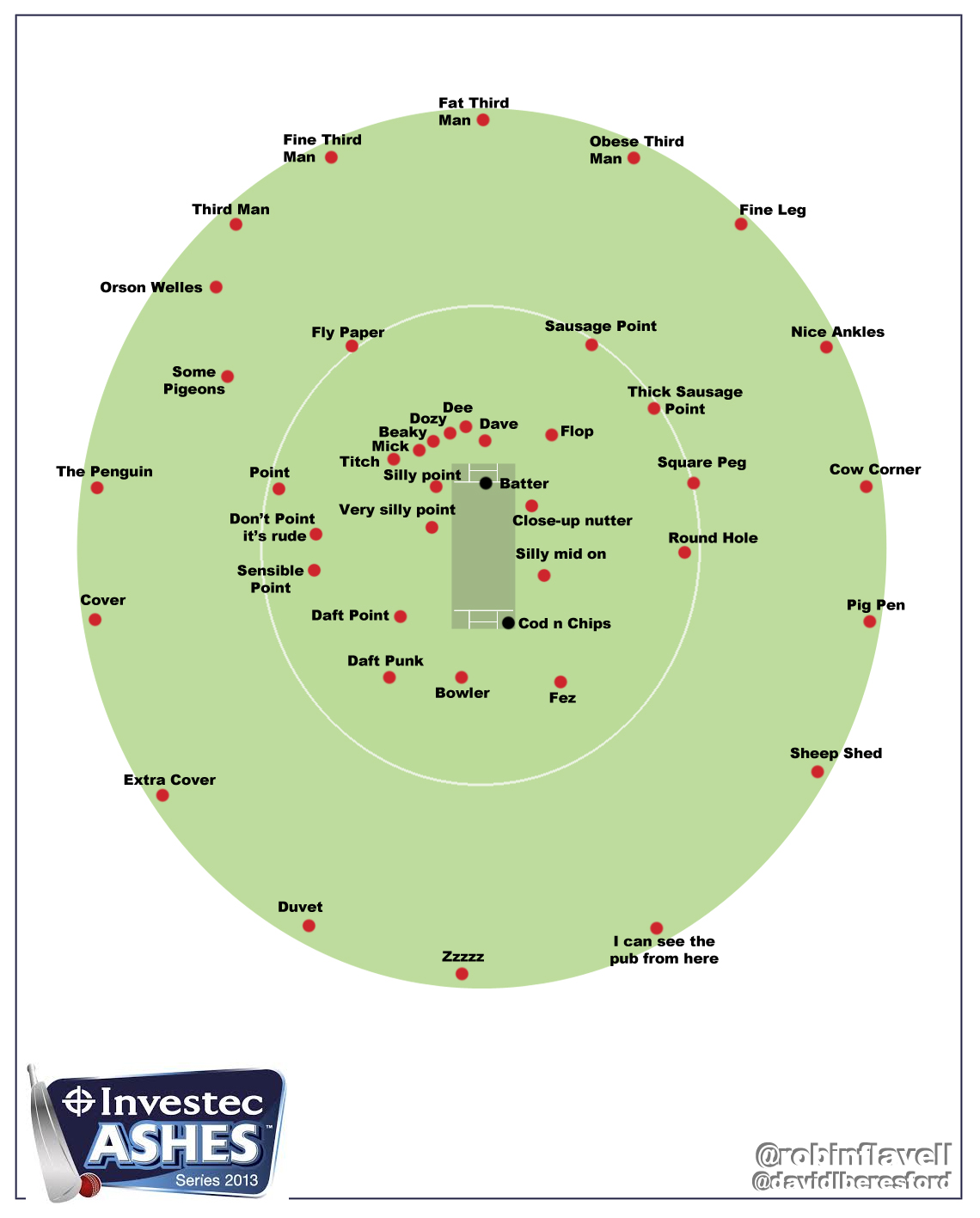
Cricket Fielding Positions For Beginners The Poke
On this diagram, you'll find instructions for setting up your own cricket pitch, as well as some of the most common fielding positions. These include: slips gully
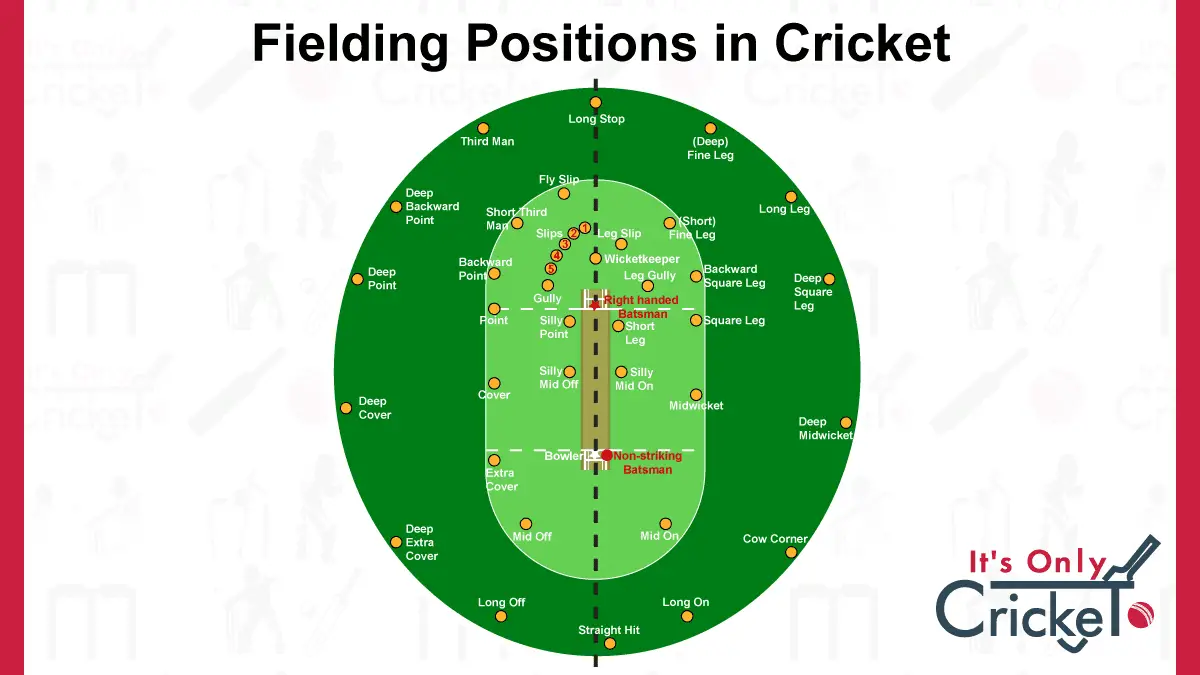
Cricket Fielding Positions Explained A Simple Guide Its Only Cricket
The diagram above shows all the fielding positions. It is important to note that these field positions are with respect to a right-handed batsman. For a left-hander, the on and the off sides are completely switched. What are the Fielding Positions in Cricket? Let's take a look at the field positions one by one to understand their significance.
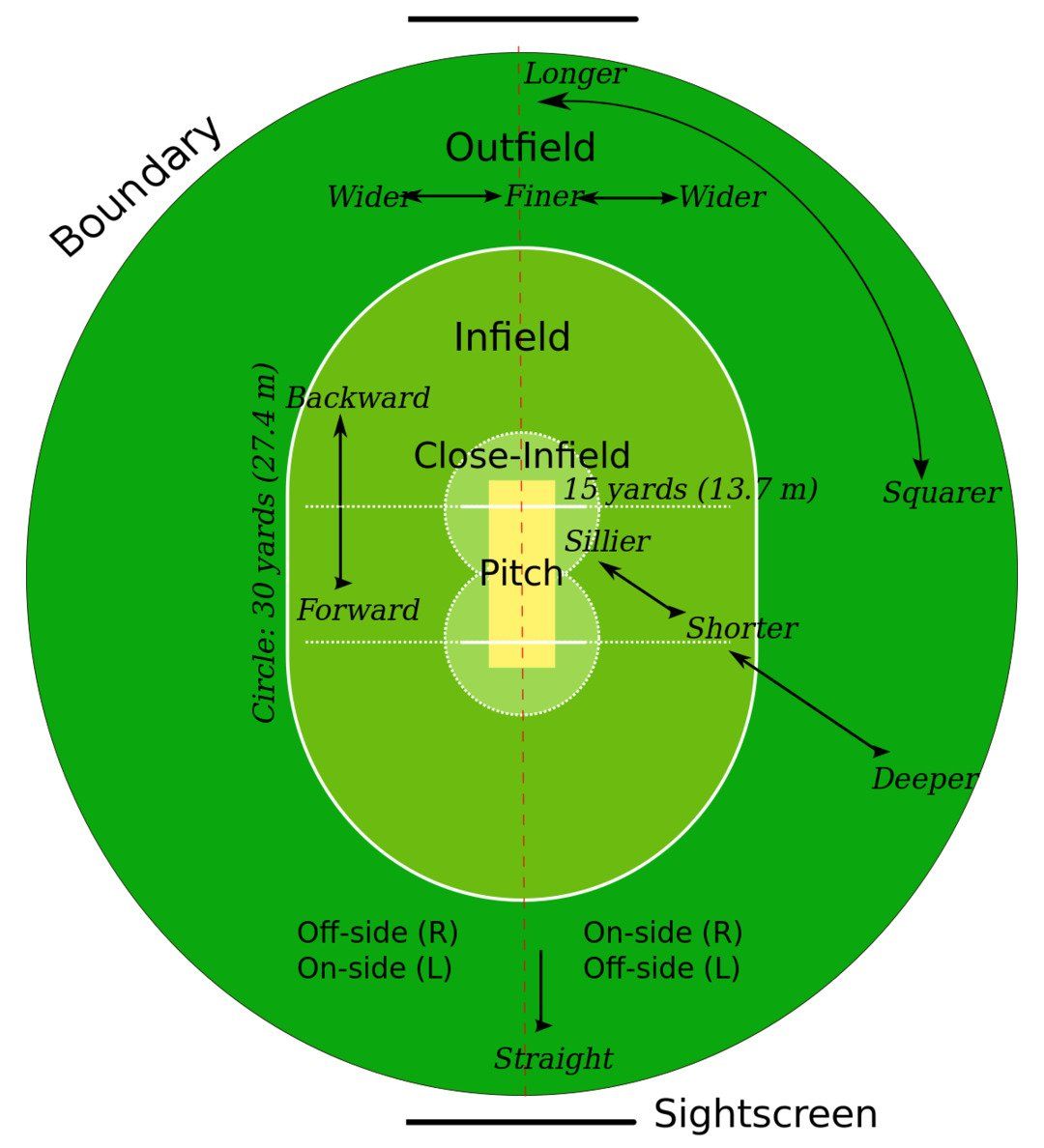
Basic Rules of Cricket for Beginners Cricket Glossary and Field Map
Fielding positions are basically divided into three parts: Close Catching, Inner Ring and Outfield. Close Catching Close catchers are fielders who are positioned near the batsman and are primarily in place to take catches. Usually, they are not more than 15 yards away from the batsman.
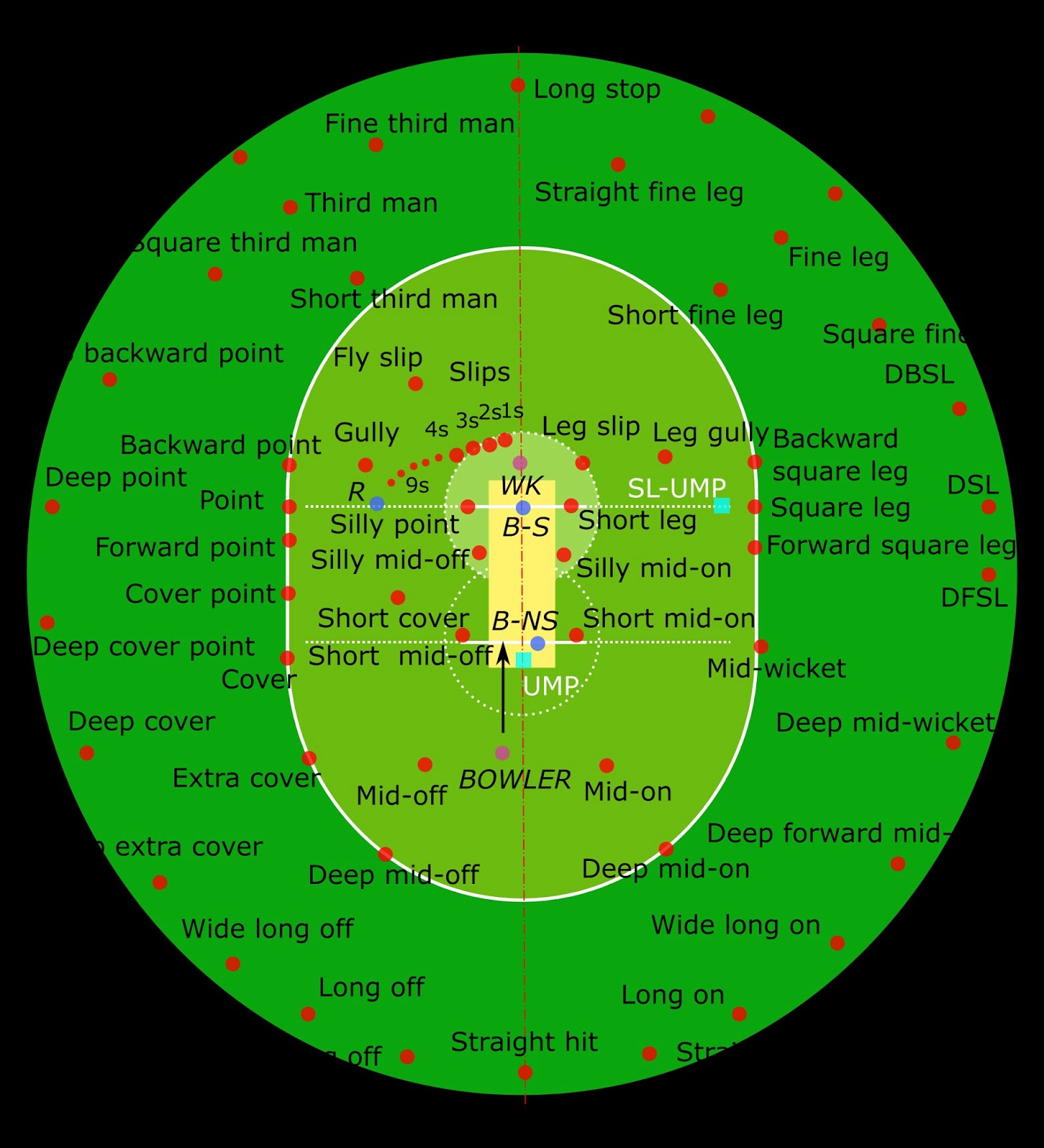
Fielding Positions in Cricket Mighty Fighters cricket club
5. Cover. The fielding captain positions the cover fielder on the off-side of the field. Moreover, he assigns them the primary responsibility of covering the area between the point and mid-off. 6. Mid-off. The fielder positioned between the bowler and the batsman is the mid-off fielder.

Fielding Positions in Cricket Detailed information YouTube
Cricket field diagram The fielding positions have some peculiar names which can be a touch mind boggling, but the following cricket diagram (based on a right-handed batsman) should help you get to grips with the fielding positions. The cricket XI